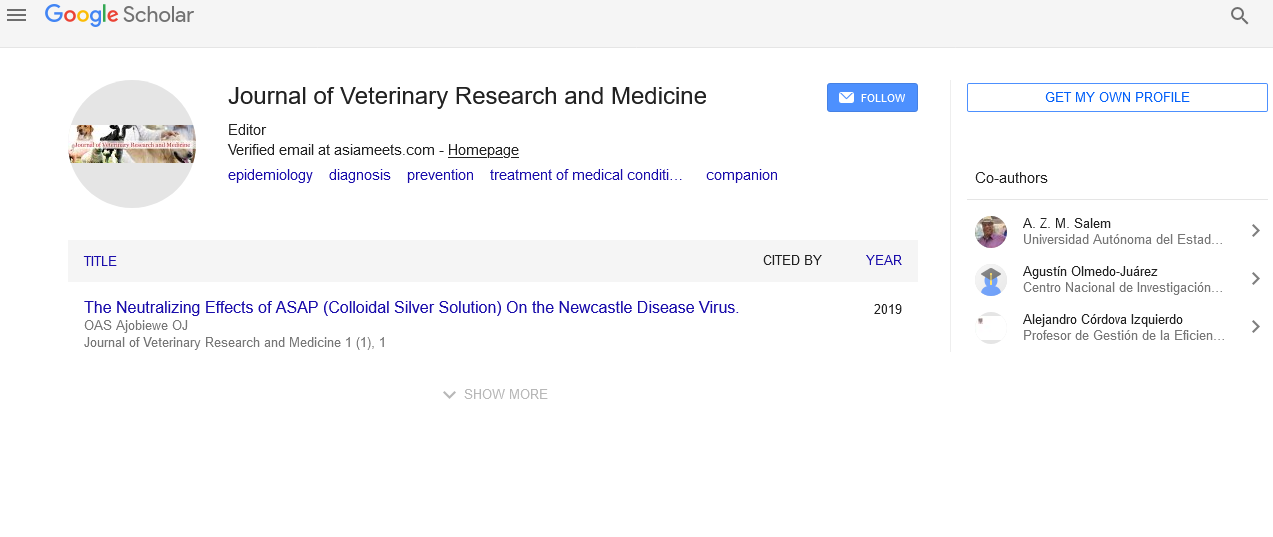Animals and their biological kingdom
Received: 03-Sep-2021 Accepted Date: Sep 17, 2021; Published: 24-Sep-2021
Citation: Fanojor R. Animals and their biological kingdom. J Vet Res Med 2021;3(1):4.
This open-access article is distributed under the terms of the Creative Commons Attribution Non-Commercial License (CC BY-NC) (http://creativecommons.org/licenses/by-nc/4.0/), which permits reuse, distribution and reproduction of the article, provided that the original work is properly cited and the reuse is restricted to noncommercial purposes. For commercial reuse, contact reprints@pulsus.com
About the Study
All residing things have been lumped collectively into kingdoms, particularly vegetation and animals. Animals protected each residing aspect that moved, ate, and grew to a positive length, and stopped growing. Plants protected each residing element that did now no longer circulate or consume and that endured developing all through lifestyles. It has become very hard to the organization a few residing matters into one of the different, so early withinside the beyond a century, the two kingdoms have been multiplied into five kingdoms: Protista (the single-celled eukaryotes); Fungi (fungus and associated organisms); Plantae (the vegetation); Animalia (the animals); Monera (the prokaryotes).
Many biologists now understand six kingdoms, dividing Monera into the Eubacteria and Archeobacteria. Animals are labeled primarily based totally on their traits. They are eminent from algae, vegetation, and fungus wherein inflexible molecular partitions are absent. Some also are heterotrophic, in general, they digest their meals withinside the inner chambers which once more distinguish them from algae and vegetation. Another elite man or woman of those species is that they're motile, besides insure lifestyles stages. Accepted structures of the category have modified at a miles quicker speed than the species have taken to evolve, it really is for sure.
Kingdoms are divided into classes known as phyla, every phylum is split into classes, every elegance into orders, every order into families, every own circle of relatives into genera, and every genus into species. Classifying large organisms into kingdoms is typically easy, however in a microenvironment, it is able to be tricky. If you've got had a bit of biology, a workout is to explain character residing matters and to try and classify them as to kingdom. Individuals are single-celled, can also add or might not pass, have a molecular wall, don't have any chloroplasts of different organelles, and don't have any nucleus. Monera is typically very tiny, even though one type,particularly the blue-inexperienced bacteria, seems like algae. They are filamentous and pretty long, inexperienced, however, don't have any seen shape within the cells. No seen a feeding mechanism. They soak up vitamins via the molecular wall or produce their personal with the aid of using photosynthesis. Protists are single-celled and typically pass with the aid of using cilia, flagella, or with the aid of using amoeboid mechanisms. There is typically no molecular wall, even though a few bureaucracies can also additionally have a molecular wall. They have organelles such as a nucleus and might have chloroplasts, so a few might be inexperienced and others might not be. They are small, even though many are massive sufficient to be diagnosed in a dissecting microscope or maybe with a magnifying glass. Nutrients are obtained with the aid of using photosynthesis, ingestion of different organisms, or both. Fungi are multicellular, with a molecular wall, organelles such as a nucleus, however no chloroplasts. They don't have any mechanisms for locomotion. Fungi variety in length from microscopic to very large. Nutrients are obtained with the aid of using absorption. For the maximum part, fungi accumulate vitamins from decaying material. Plants are multicellular and maximum do not pass, even though gametes of a few vegetation pass the use of cilia or flagella. Organelles such as the nucleus, chloroplasts are present, and molecular partitions are present. Nutrients are obtained with the aid of using photosynthesis. Animals are multicellular and pass with the resource of cilia, flagella, or muscular organs primarily based totally on contractile proteins. They have organelles such as a nucleus, however no chloroplasts or molecular partitions.
Animals accumulate vitamins with the aid of using ingestion. Animals are eukaryotic, multicellular, species belonging to the Kingdom Animalia. Every animal has its personal precise traits. They attain their strength both through feeding on vegetation or on different animals. There are hundreds of thousands of species that have been identified, with few proportions comparable traits whilst others fluctuate drastically.





